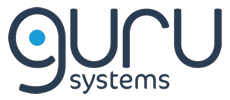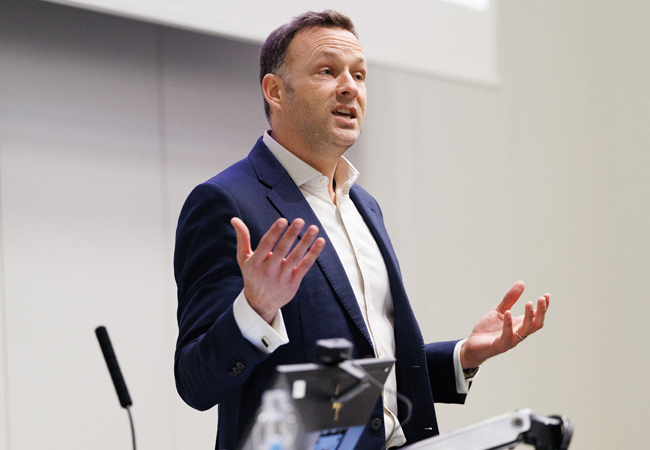Casey Cole is the founder and CEO of Guru Systems. We recently sat down with him to discuss the upcoming regulatory changes to the heat network industry. We covered how he anticipates these changes to impact key stakeholders and what can be done to proactively prepare.
Guru Systems (GS): Casey, it would be great if you could start by giving us a bit of background on the regulatory landscape and how it will be changing.
Casey Cole (CC): The background here is that the world of heat networks is changing dramatically. Ofgem will begin regulating our industry within the next two years, and this means a big shift for everybody who’s involved with the process of designing, installing, commissioning, and operating heat networks. Today, we have the Heat Network (Metering and Billing) regs that go some way towards protecting customers by, among other things, requiring that heat network customers are billed only for the heat they consume. Then we also have CP1, which like the Metering and Billing regulations also support best practice in the industry but this time by laying out a range of minimum technical standards. But while CP1 is wide-reaching, it is also entirely voluntary. Same with Heat Trust – it’s the de facto standard of customer protection on heat networks but, again, it’s voluntary. Ofgem will be different. Ofgem is going to change the game. So now is the time to start paying attention to the implications of having a regulator in a previously unregulated space.
GS: With regards to Ofgem regulations, what do you think they will be holding stakeholders to account for?
CC: There are four key areas that we know that Ofgem is going to regulate: customer protection, technical standards, price and carbon emissions. In the case of technical standards and customer protection, it’s expected that network operators will have to measure what matters before reporting to Ofgem.
GS: How much does this differ from what Ofgem currently does?
CC: Today, Ofgem regulates electricity and gas. In electricity, Ofgem regulates 14 Distribution Network Operators across the country. There are only 6 Gas Distribution Networks. Right now, it’s possible for Ofgem to have a fairly close relationship with each of these organisations, and to pick up the phone when issues need to be resolved. The system can be human and it can be analog. Contrast this with the world of heat networks where Ofgem will need to regulate at least 14,000 heat network operators. While it might be possible to get all 14 Distribution Network Operators (DNOs) on the same call, that certainly won’t be possible with heat networks. Manual processes and analogue resolutions to problems cannot continue.
So the basis on which Ofgem must regulate this new space is through digitalisation. You have to turn the elements that are being regulated into data, and you then have to, as much as possible, automate the processing of that data in order to identify whether it’s a risk. I’m not saying for a second that there aren’t humans involved in this at various stages, but you have to take a risk-based approach and automate as much as possible.
GS: You’ve mentioned digitalisation a couple of times there, do you see this playing a larger role for Ofgem?
CC: As I was saying, to do this, meters will need to be installed where they aren’t currently, and the meters that are installed already will have to report more than the simple kilowatt hour reading that might have been necessary for the Heat Network (Metering and Billing) Regulations.
Now, our entire industry will need to do what the team at Guru Systems have always known to be important: make use of all the data available from heat meters – that’s all six registers [flow temperature (°C), return temperature (°C), flow rate (m3/hour), volume (m3), instantaneous power (kW) and energy (kWh)] not just kilowatt hours – and make use of this data to monitor and improve energy performance. This data must be used to demonstrate that the heat network is meeting the expectations that have been set out in regulations and in the project specification.
GS: How will technical standards be enforced by Ofgem?
CC: The embodiment of this in regulatory terms is the Technical Assurance Scheme. To protect customers, and to keep prices and carbon emissions low, the fundamental task is to develop this scheme so that poor heat networks can’t get through. Ofgem has recognised that stakeholders must be able to verify outcomes with data by digitalising the way that stakeholders report to them as the regulator. It will become a requirement that a consultant, contractor or client must show that what was specified is ultimately what was then delivered – all by providing data, including meter data, that supports this.
GS: As a stakeholder, what might you have to do differently when these regulations come in?
CC: Regulations are going to be retrospective. They will of course monitor how new heat networks perform but regulations will also apply to existing networks. This is likely to mean that meters are going to have to go into dwellings on a much wider basis, and the meters that are in dwellings will need to deliver more accurate and reliable data for reporting back to Ofgem annually.
If you’re a heat network designer you will have to design in a way that’s compliant with the Technical Assurance Scheme. You’re going to have to show that your design meets the requirements of regulation and the building specification. When that design is then installed and commissioned, it will be measured against the original intent. The designer will almost certainly bear the risk in the case that the design is unable to achieve the performance required.
If you’re a contractor it will be necessary to demonstrate that the heat network was installed and commissioned in line with the specification and minimum standards under the regulations. Data will be used to verify outcomes.
If you’re a heat network operator there will be a requirement to use meter data to show ongoing good performance. A key part of compliance with technical standards will be through reporting energy performance data to Ofgem as the regulator.
One of the things that we know about the Technical Assurance Scheme is that it will involve the certification of different elements. There won’t be one grand certification for a heat network. Instead, the various elements that get certified will make up a bigger picture with stakeholders being accountable for their aspects of the whole.
If, for example, a dwelling is not performing as it should be, the dwelling level certificate could not be issued – most likely meaning the flat could not be let or sold. The stakes are high. This would affect stakeholders at all levels by dialling up the accountability of each organisation throughout the process, with digitalisation driving transparency.
GS: What’s your advice to these stakeholders on how to prepare for these new regulations?
CC: For designers, it means getting organised, and keeping the performance of future schemes at the top of the priority list.
For contractors, it means understanding requirements and using digital tools to verify outcomes.
For network operators, it will be important that the data you’re submitting to Ofgem shows a well performing network. Submitting evidence of a poorly performing network is likely to mean the submission will be flagged up as a higher risk by Ofgem, potentially resulting in an audit and an imposed requirement for remediation. The best thing you can do is to collect data long before you have to submit it to Ofgem; that way, you have time to fix performance issues. Ideally, you should constantly monitor the performance data from your site, not just annually for the Ofgem submission that you will have to make. Ongoing monitoring enables you to see what is working well. Digital platforms may even proactively alert when it isn’t working well so that you can feel assured that you’re seeing what the problems are and where they are in a tighter time frame. These regulations aren’t just about digitalising to make a submission for compliance, they are about digitalising to genuinely monitor performance, and to take action to improve where needed.
GS: Finally, where is Guru Systems at in response to this new regulatory landscape and digitalisation as a whole?
CC: At Guru Systems we always had this in mind, from the beginning we set ourselves up to bring this level of transparency and accountability to all stakeholders. We believe that regulations have now caught up with this view and the market will have to follow. If you’ve not been installing Guru Systems hardware before now, it’s not too late – our solutions are easily retrofitted. Also, we’ve recently opened up our performance management platform Guru Pinpoint so that it can now accept data from meter readers made by other providers, and from wired M-Bus networks. This means we can help you look at data that comes from across all of your sites.
We are positioned at the heart of the issues that are now so central to designers, consultants, and the entire heat networks value chain in a way that wasn’t the case before – and we’re happy to help.

